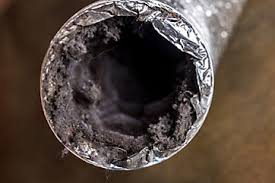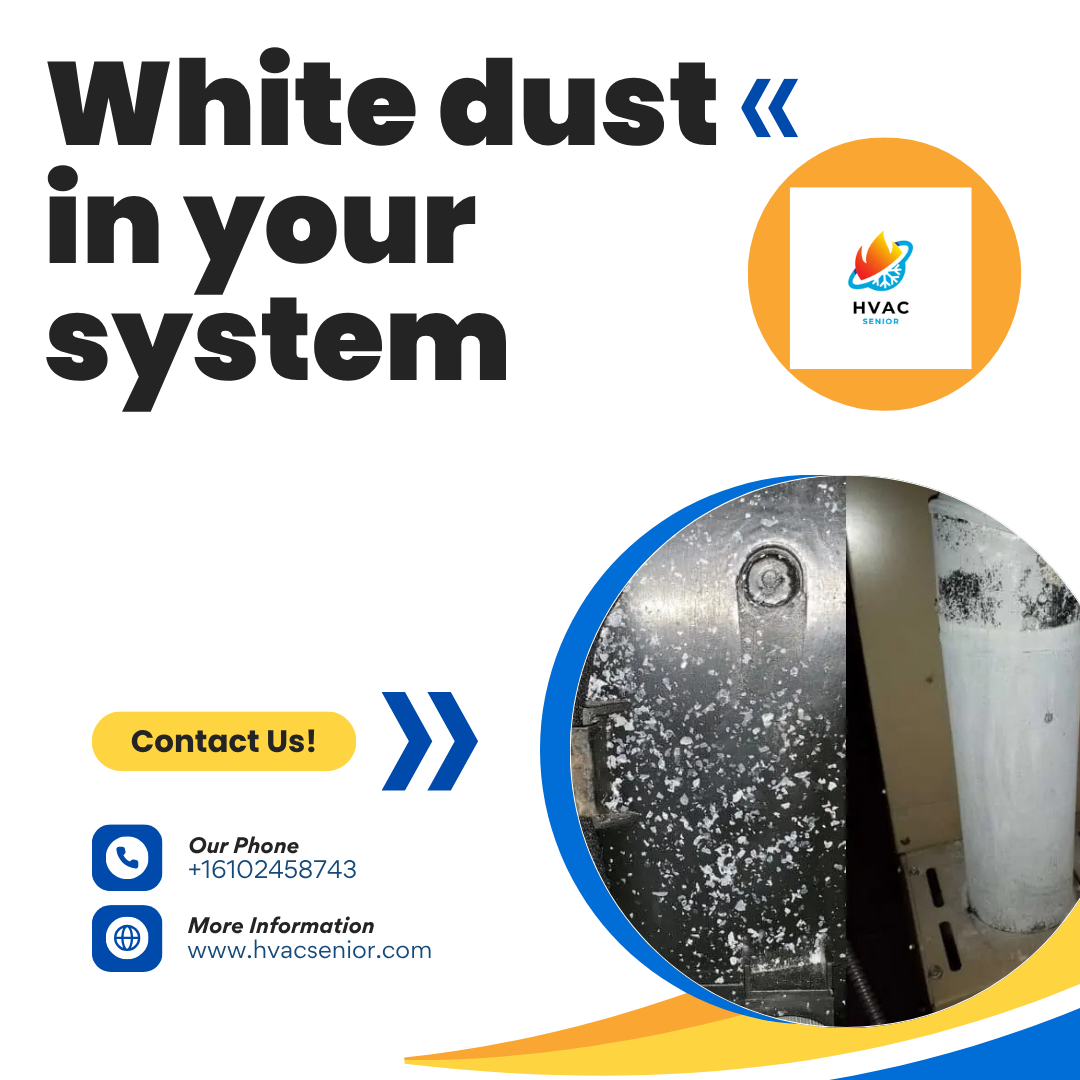Do you ever notice a light dusting of white dust on your furniture or floating around the air whenever your heater comes on? You wipe it off, and tomorrow it appears again—totally like it’s coming straight out of your vents. You’re not losing your mind! That curious white powder may be resulting from your heating system, and being aware of why it’s happening can save you from future air quality and maintenance problems.
Let’s break it down in plain terms—why does white dust happen, how do you determine if it’s harmless or a sign of a problem, and how you can stop it for good.
1. What Is White Dust, Really?
White dust is exactly what its name implies—a light, fluffy residue that looks like someone has generously sprinkled baby powder all over your home. It typically is most apparent on darker furniture or behind heating vents. Most homeowners first assume it’s plain old dust, but if it continues to return quickly and has a lighter or finer texture, it’s most likely something more.”.
The truth is, “white dust” can have several causes, depending on your heating system and indoor air quality. Sometimes it’s merely a mineral deposit; sometimes it means your HVAC system needs service.
Also read: Why is my Electric Furnace Blowing Cold Air.
Common Causes of White Dust from Heating Systems
Let’s go through the most prominent culprits, step by step.
a) Mineral Deposit from Humidifiers
If you have a whole-house humidifier or a portable one that rests in your furnace, this is probably your number-one suspect. When high-mineral-content water (hard water) evaporates, it leaves behind fine particles of calcium and magnesium. Those tiny minerals become airborne and distribute themselves throughout your ducts, eventually coming down as white dust on everything.
Rapid test: If you notice that the white dust is especially bad when your humidifier is running, turn it off for a few days. If the dust reduces, you’ve found your culprit.
Solution:
- Use distilled or demineralized water instead of tap water.
- Put a de-mineralization cartridge or filter in your humidifier.
- Cleaning the humidifier tank weekly with a vinegar solution to prevent mineral buildup.
b) Dry Air and General Household Dust
If your heating system is constantly drying out the air in your house, regular dust is more visible. Dry air causes particles to remain suspended for longer periods, creating a sense that you have an immediate “dust storm” in your home.
Solution:
- Operate a humidifier, but maintain it in good working order.
- Maintain indoor humidity from 35% to 50%.
- Vacuum and dust regularly with a microfiber cloth that traps particles, not merely scatters them.
c) Filthy or Absent Air Filters
Air filters are the behind-the-scenes heroes of clean indoor air. They capture dust, pollen, lint, and debris before air passes through your vents. If your filter is clogged—or worse, there is none—your system just blows that dirt straight back into your rooms.
- Indications that your filter may be at fault:
- You notice dust blowing straight out from vents.
- The return vent is dirty or has noticeable buildup.
- You have not changed the filter in more than two months.
Solution:
- Replace filters every 1–3 months (or as often as your manufacturer suggests).
- Change to HEPA or high-efficiency pleated filters if you or a member of your family suffers from allergies or pets.
- Always make sure filters seal tightly to prevent bypass airflow.
d) Leaky or Dirty Ductwork

Leaky or Dirty Ductwork
Your ductwork is basically the highway for your warm air—but when it becomes leaky or dirty, it becomes a transport vessel for unwanted “passengers” like drywall dust, insulation particles, or attic grime.
If your ducts have holes in them, they may be drawing filthy air from crawl spaces, basements, or attics—and circulating it throughout your house. This is easily appearing as fine white or gray dust.
How to recognize:
- Dust is largely found near specific vents.
- There is a musty or dusty odor when the system operates.
- The problem increased after home remodeling or insulation installation.
Remedy:
- Have ducts professionally cleaned and inspected by an HVAC technician.
- Seal leaks with mastic or aluminum foil tape, not regular duct tape.
- Aeroseal (a pricey sealing process) if your duct system is old or very leaky.
e) Construction or Renovation Dust
Did you recently complete a room renovation, sand drywall, or put in new flooring? Those products emit extremely fine white particles that can circulate through your HVAC system for weeks unless they get filtered out.
Solution:
- Change your air filter as soon as the renovation is complete.
- Vacuum registers and vents with a vacuum cleaner.
- Sweep up lingering construction dust with a shop vacuum that has a HEPA filter.
Also read: Heat Pump Not Working.
Is White Dust Harmful?
White dust is generally not toxic—unless.
Stirring up particles of minerals or particles of dust that you inhale may irritate your nose, throat, and lungs—especially if you are sensitive to asthma or allergies. It can foul up your furnace filter and reduce efficiency over the long term. If the dust is mixed with insulation fiber or other building material, it may even contain irritants or low-level pollutants.
If you don’t know what’s in the dust, have it analyzed by a local indoor air quality professional or HVAC technician. They can test for mineral content, mold spores, or chemical residues.
Simple Repairs You Can Do Today
Here’s a quick to-do list to get started clearing the air—literally:
✅ Replace your furnace or HVAC filter right now.
✅ Dust vents, registers, and return grills with a damp cloth.
✅ Inspect your humidifier—clean it and refill with distilled water.
✅ Vacuum your home with a HEPA filter vacuum cleaner.
✅ Have your ducts cleaned if it’s been 3–5 years or more.
✅ Keep your humidity at an even level (around 40%).
Long-Term Prevention Tips
Enhance your filter quality:
Purchase a MERV 11 or higher filter to trap more microscopic dust and allergens.
Install an air purifier:
A HEPA portable unit or home-wide air cleaner can greatly reduce white dust, especially in the winter months.
Service your furnace annually:
A yearly pro tune-up will get your system to burn cleanly and not blow junk into your air.
Leaky ducts must be inspected regularly:
Small leaks can pull in the dust from dirty spaces.
Softened water for humidifiers:
Hard water is the #1 reason for white mineral dust recurrence.
When to Call a Professional
If you’ve tried everything and white dust still coats your home, it’s time to call an HVAC technician. Persistent dust could signal:
- Damaged or disconnected ducts
- A malfunctioning humidifier
- Poor air balancing
- An undersized or old filtration system
- A professional inspection can pinpoint the source and recommend fixes tailored to your home.
Also read: Heat Pump Freezing Up.
Final Thoughts
White dust from your heating system can be annoying—but it’s also your home’s way of saying, “Hey, something’s off!” Whether it’s a dirty filter, mineral-heavy humidifier, or dusty ductwork, the problem has a fix—and most are easy and affordable.
By maintaining your filters, keeping humidity balanced, and having your system serviced yearly, you’ll enjoy cleaner air, better heating efficiency, and a much more comfortable living space.
So the next time you notice that eerie white powder dropping onto your coffee table, don’t panic—grab a new filter, check your humidifier, and take it as a reminder to give your HVAC system some attention. Your lungs (and your furniture) will appreciate it.















